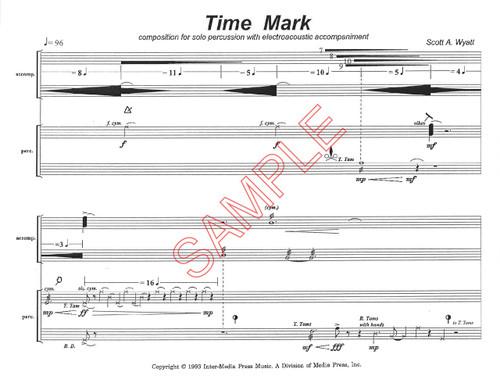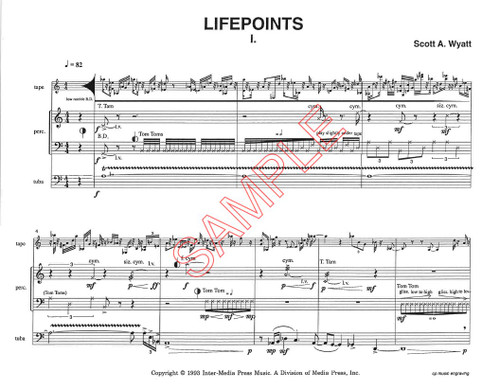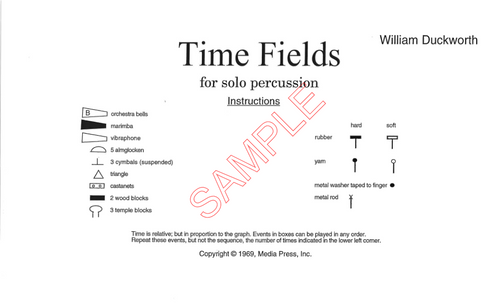For solo percussion and tape (.m4a) by Scott A. Wyatt. Elements of improvisation add contrast to the drama of this powerful work for electro-acoustic sounds and multiple percussion. Instrumentation: Mark tree, finger cymbal, five sizzle cymbals, five suspended cymbals, two tam tams, vibraphone, marimba, five roto-toms, bass drum, two timpani and a wood slab. Electronic sounds at their finest! Duration: 8' 45"
Print size: Letter (8.5x11)
Review from Percussive Notes:
I am fascinated with the idea of chamber music between acoustic and electronic instruments. It often makes me consider the parameters of chamber music interactions. This is why I was immediately interested in “Time Mark.” This work features a beautiful sonic exploration of electronic and acoustic sounds, but it falls short of chamber interaction due to its fixed tape accompaniment as well as its use of MIDI approximations of acoustic instruments within the tape part. While many of these issues are likely due to the age of the piece, written in 1993, this work is interesting in its use of a large multi-percussion setup.
Admittedly, “Time Mark” would have been more novel during the early ’90s when the growing literature of live electro-acoustic works was in a state of early growth. However, now that live and more nuanced fixed electronics are available to performers, the present interactions with the tape part in “Time Mark” sound a bit outdated. At the same time, there is something to be said for the incorporation of improvisation within this work. While the prerecorded audio may not respond to the performer, the performer is responding and creating directly under the influence of the tape part, which is worthwhile.
“Time Mark” would be a nice undergraduate or graduate multi-percussion work for percussion and tape, although a bit hard to program. This is due to its extensive instrumentation list requiring ten cymbals, two tam-tams, and many other instruments. It is hard to imagine a performance of this piece occurring outside of academia, which makes it prohibitive for some percussionists looking to explore fixed-electronic works. Additionally, the tape transcription is adequate for performance, but the notation in the score does not leave the performer with a great deal of information for score study of the electronic part.
—Quintin Mallette
Demo:







